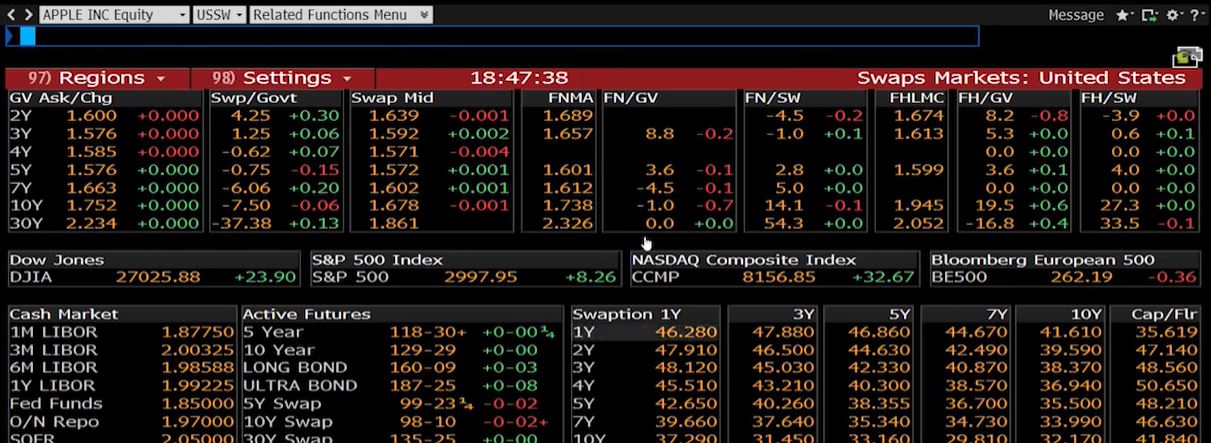

Michael Bloomberg Linkedin Profile with nearly 2 billion followers Both have their own publications, but Morningstar does not have a television or radio station. Both companies offer detailed investment advice, but only Morningstar provides credit ratings and an investment consulting component.

The next-closest competitor is Morningstar, a publicly-traded company that also offers subscription-based data, research, and proprietary pricing tools but not trading capabilities. However, the company's Thomson Reuters Eikon platform does not offer anything comparable to Bloomberg's securities analysis, pricing and trading services. The publicly-traded company reported 2018 revenue of $5.5 billion, primarily from subscription sales to its financial news and analysis services. Competitorsīloomberg's closest competitor is Thomson Reuters Corporation (TRI), which also leases proprietary financial information terminals. The magazine had long been sent to all terminal subscribers, but the company decided that it had outlived its usefulness. It's best known for its annual ranking of MBA programs.īloomberg Markets magazine ceased publication as a standalone news publication in late 2015.
/GettyImages-526663126-1edf624c7b38489a9c8c38948aadfd5f.jpg)
The magazine hit a high of 6 million readers in the mid-1970s, but it has faded since then. The magazine has existed since shortly before the 1929 stock market collapse it was originally aimed at business people but was later reoriented toward consumers.

The company purchased BusinessWeek magazine from McGraw Hill Financial in 2009 and renamed it Bloomberg Businessweek. Bloomberg's radio station is available in five markets: New York, Boston, Oakland/San Francisco, Atlanta, and Denver. 2015, after which a number of producers resigned. The network went through its largest-ever round of layoffs in Sept. The network runs more live programming than either CNBC or Fox Business News, but it has struggled for viewers. Initially, it was only available on DirecTV, but it soon moved to cable television. Bloomberg TVīloomberg Television is a 24-hour cable news network established in 1994. A separate service called Bloomberg Government provides detailed updates on congressional and regulatory changes and schedules it publishes updated information almost instantaneously. The company also has numerous other subscription services, including Bloomberg Law, which competes with LexisNexis. There are reportedly over 320,000 subscribers worldwide.
WHAT IS A BLOOMBERG TERMINAL PROFESSIONAL
More Than Just Bloomberg Terminalsīloomberg Professional Services charges $2,000 per month for each of its terminals, which are ubiquitous in finance due to their analysis, trading and communication abilities. He served as chief executive officer (CEO) until he stepped aside to run for mayor of New York City in 2001, and he returned to that position in early 2015 at age 73. The majority of the company has been owned by Michael Bloomberg since it was established, and he currently owns 88% of it. Bloomberg Inc., which manages Michael Bloomberg's assets, bought Merrill's remaining stake for a reported $4.43 billion in 2008. The terminals are now part of the professional services division, which brings in the majority of the company's estimated $10 billion of annual revenue.īloomberg LP bought back one-third of Merrill Lynch's stake in 1996 for $200 million. The company was renamed Bloomberg LP in 1986, and by 1991 it had 10,000 of its terminals installed on finance professionals' desks. Merrill Lynch invested $30 million in the company in 1984. IMS developed the Bloomberg Terminal system to track financial market information and calculate the price of financial instruments. He teamed up with Thomas Secunda, Duncan MacMillan, and Charles Zegar to found Innovative Market Solutions (IMS). When Salomon Brothers was taken over by Phibro Corporation, Michael Bloomberg received a $10 million check for his partnership interest in the firm.


 0 kommentar(er)
0 kommentar(er)
